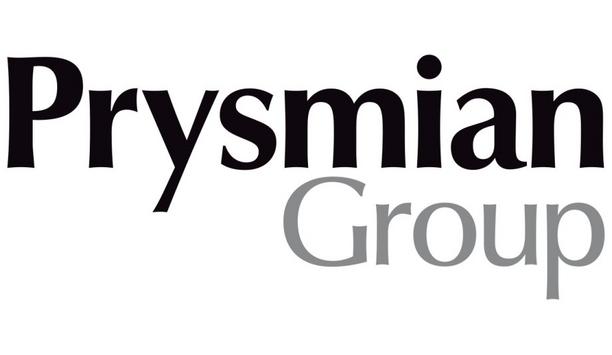In 2021, Russia provided Germany with 55% of its natural gas imports, 35% of its oil imports and 50% of its hard coal imports. The war in Ukraine is causing a monumental shift in the country’s energy landscape, with increasing pressure to become independent of these fossil fuel imports.
Gas is a key component for many industrial processes – it keeps half of Germany’s 41.5 million households warm and accounted for 15.3% of German electricity generation last year. 95% of gas consumption and 98% of oil consumption in Germany is met by imports.
Oil covered almost a third of Germany’s primary energy use in 2021, mostly for transportation. In 2021, oil-based products still fueled 85% of transportation in Germany.
Electricity from fossil gas plants
European countries were paying Russian energy suppliers close to one billion euros per day for coal
As of April, European countries were paying Russian energy suppliers close to one billion euros per day for coal, oil and gas. Since Russia’s invasion of Ukraine, however, Germany has been facing mounting pressure to join other European countries in placing sanctions on Russian energy.
This is no small feat, however, as suddenly cutting supplies from Russia would cause major economic challenges. One central impact would be rising electricity prices to a level beyond the already record-high levels reached last year. In fact, throughout 2021, the cost of generating electricity from fossil gas plants increased almost sevenfold.
Why do rising gas prices affect electricity prices so heavily?
With the uniform pricing of the EU wholesale electricity markets, an increase in gas prices also results in an increase of average wholesale electricity prices – because the most expensive power source that is used sets the price. Gas-fired power plants are a very expensive source of electricity and are only used if other power plants and renewable energies cannot meet the total demand.
With an increase of the installed capacity of solar PV and wind, these hours will be continuously reduced. But at the same time, the growth of e-mobility and electrical heating will also increase the electricity demand and with it the need for electricity from gas power plants.
Need for secure and affordable energy
Gas-fired power plants are a very costly source of electricity and are only used if other power plants
Secure and affordable energy has become the number one concern for many Germans, as shown by a Forsa poll ahead of the election in North Rhine-Westphalia. 18 million people in the region headed to the polls on May 15, with the Greens Party increasing their share of votes by 11.8% compared to the 2017 election.
Clearly, their goals of becoming climate neutral before 2040 and generating 100% of electricity from renewables by 2035 resonate with the citizens.
Fifth package of restrictive measures
On a national level, the German government last month released the biggest energy policy reform in decades, proposing to lift the rollout of wind and solar power “to a completely new level.”
The reform, referred to as the Osterpaket (easter package) aims to free up new land for green power production, speed up permit procedures and massively increase wind and solar additions. However, transitioning away from fossil fuels is easier said than done.
War in Ukraine
Germany has reduced its dependence on Russian oil imports from 35 to 12% and gas from 55 to 40%
Since the start of the war in Ukraine, Germany has reduced its dependence on Russian oil imports from 35 to 12% and gas from 55 to 40%. The country is planning to halt all Russian oil imports before the end of the year and wean itself off Russian gas by mid-2024.
In April, the EU agreed on a fifth package of restrictive measures against Russia, which included an import ban on all forms of Russian coal, which will likely take full effect in mid-August.
Energy partnerships with Qatar and Washington
To reduce the country’s dependency over the last few months, the German government has scrapped the contentious Nord Stream 2 pipeline project, secured new energy partnerships with Qatar and Washington and committed to building terminals for the import of liquefied natural gas (LNG). If these LNG terminals later transition into green hydrogen hubs, this could, over time, support the country’s transition to carbon neutrality. However, time is not on the side.
The sudden need to become independent of Russian fossil fuels has signaled a “historic turning point”, according to Chancellor Olaf Scholz. He believes the elimination of fossil fuel imports for Germany shifted from a longer-term environmental protection measure almost overnight to a question of national security and short-term economic stability.
Expand EV charging infrastructure
Finance minister, Christian Lindner, earlier this year labeled renewable power as “freedom energies”, which can enable the country to simultaneously reduce its energy dependence and decarbonize the economy. As such, 200 billion euros has been earmarked for investments to expand EV charging infrastructure, hydrogen production, and the construction of renewable power sources.
German government last month released the biggest energy policy reform in decades
On a national level, the German government last month released the biggest energy policy reform in decades, proposing to lift the rollout of wind and solar power “to a completely new level.”
The reform, referred to as the Osterpaket (easter package) aims to free up new land for green power production, speed up permit procedures and massively increase wind and solar additions. However, transitioning away from fossil fuels is easier said than done.
Import of liquefied natural gas
Since the start of the war in Ukraine, Germany has reduced its dependence on Russian oil imports from 35 to 12% and gas from 55 to 40%. The country is planning to halt all Russian oil imports before the end of the year and wean itself off Russian gas by mid-2024. In April, the EU agreed on a fifth package of restrictive measures against Russia, which included an import ban on all forms of Russian coal, which will likely take full effect in mid-August.
To reduce the country’s dependency over the last few months, the German government has scrapped the contentious Nord Stream 2 pipeline project, secured new energy partnerships with Qatar and Washington and committed to building terminals for the import of liquefied natural gas (LNG).
If these LNG terminals later transition into green hydrogen hubs, this could, over time, support the country’s transition to carbon-neutrality. However, time is not on the side.
Short-term economic stability
Elimination of fossil fuel drifts for Germany went from a longer-term environmental guard
The sudden need to become independent of Russian fossil fuels has signaled a “historic turning point”, according to Chancellor Olaf Scholz. He believes the elimination of fossil fuel imports for Germany shifted from a longer-term environmental protection measure almost overnight to a question of national security and short-term economic stability.
Finance minister, Christian Lindner, earlier this year labeled renewable power as “freedom energies”, which can enable the country to simultaneously reduce its energy dependence and decarbonize the economy. As such, 200 billion euros has been earmarked for investments to expand EV charging infrastructure, hydrogen production and the construction of renewable power sources.
Increasing renewables to reduce fossil fuel dependency
A new report has shown that renewable energy sources accounted for 50% of electricity consumption in Germany in the first quarter of 2022 – nine percentage points higher than in the same period last year. Globally, annual renewable capacity additions broke a new record in 2021, increasing 6% to almost 295 GW.
According to the IEA, this is expected to further increase over 8% in 2022, reaching almost 320 GW. Adding more renewables into the energy mix alone, however, won’t guarantee a secure supply of energy.
Adding more renewables into the energy mix alone, however, won’t guarantee a secure supply of energy
"The war in Ukraine is another factor on top of many showing that we should have accelerated the switch to renewable energy yesterday," says Willi Appler, who is responsible for business development and regulatory affairs at gridX, adding "The need to simultaneously decarbonize our power systems and attain energy security and independence will not go away anytime soon. The only way this can be achieved is to future-proof our power systems by adding intelligence and flexibility to all energy assets and monetizing this flexibility so that the benefits flow through to all stakeholders."
Match supply and demand to enhance cost-Savings
"We must future-proof our power systems by adding intelligence and flexibility to all energy assets and monetizing this flexibility so that the benefits flow through to all stakeholders," Willi Appler, Business Development & Regulatory Affairs, gridX.
Renewables are inherently intermittent and variable – the more we use, the more flexibility must be integrated into the system. Because they may no longer be able to rely on fossil fuel imports to meet additional electricity demand, demand-side management must be leveraged to better balance the grid.
Incentivizing users to consume clean energy
Incentivizing users to consume clean energy when it is cheapest and most plentiful
Incentivizing users to consume clean energy when it is cheapest and most plentiful through time-of-use tariffs is one important lever. It is also vital to make batteries and electric vehicles work more intelligently by connecting these assets to the grid and using smart curtailment and V2G technology.
Consumers must become active participants in the market, not only by generating their own electricity, but also by ensuring a higher utilization of green energy – by sharing energy or using apps to optimize energy flows.
Renewable electricity generation
It is vital that this flexibility appears in every aspect of the energy market – between assets in a household, across smart districts and electric vehicle fleets, and on a larger level between power plants. Bioenergy will play an increasingly important role as a storable energy source.
Green hydrogen and biomethane plants must be further developed as a clean way to support renewable electricity generation. Virtual Power Plants (VPPs) that connect power plants and assets to the energy market are an important way to better balance generation and consumption at all levels.
Energy companies can aid the switch at this important time by integrating energy supply, self-generation and efficient consumption, ultimately reinventing the customer relationship around flexibility. Using the many digital tools available and switching to service-based models will ensure that the cheaper prices of renewables are passed on to both industry and consumers.







